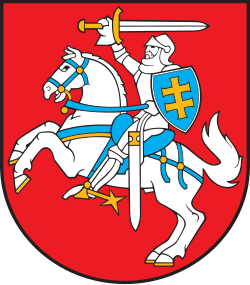 |
|---|
| |
An independence referendum was held in Lithuania on 9 February 1991, [1] eleven months after independence from the Soviet Union had been declared on 11 March 1990. [2] Just over 93% of those voting voted in favour of independence, while the number of eligible voters voting "yes" was 76.5%, far exceeding the threshold of 50%. [3] Independence was subsequently achieved in August 1991. [4] The independence of the Republic of Lithuania was re-recognized by the United States on 2 September 1991 and by the Soviet Union on 6 September 1991.
